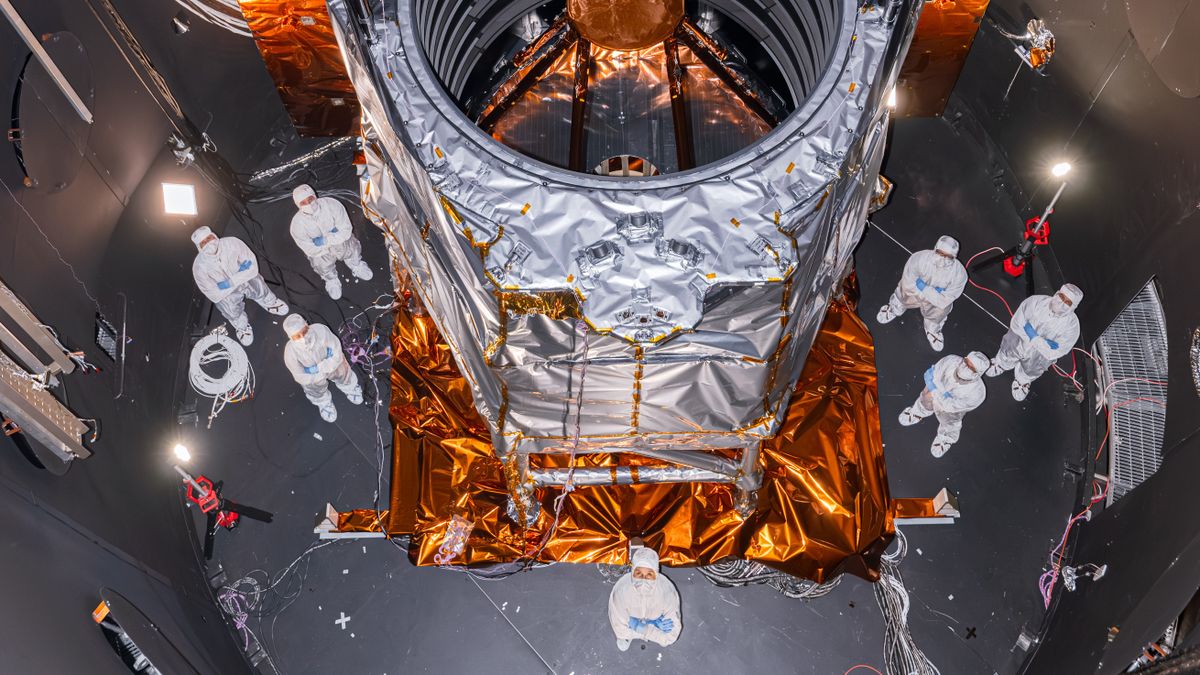ARTICLE AD BOX
 A SpaceX Falcon 9 launching 22 Starlink satellites Aug. 20, 2024. Credit: SpaceX
A SpaceX Falcon 9 launching 22 Starlink satellites Aug. 20, 2024. Credit: SpaceX
SpaceX’s ascent from commercial launch provider to indispensable national security asset marks one of the most significant shifts in America’s defense industrial base in decades. As Elon Musk’s company extends its reach deeper into military space operations, traditional defense contractors are being forced to confront the reality that the Pentagon increasingly views SpaceX not merely as a supplier but as a transformative partner.
The company’s Starshield service — a military-focused variant of its Starlink satellite constellation — has already captured market share from established satellite communications operators that have supported the Defense Department for generations. This displacement of incumbents reflects both the Pentagon’s growing appetite for low-cost, rapidly deployable space capabilities and SpaceX’s ability to deliver them.
‘Breathtaking pace’
Starlink’s inroads into the government sector are occurring at a “breathtaking pace,” Baird Equity Research said in a note to investors April 11. “If you need low-latency connections or real-time control and coordination of unmanned drones, the preferred choice is Starlink,” Baird analysts wrote. “Starlink’s battlefield connectivity has been well documented in Ukraine, but the emergence of Starshield — a business unit inside SpaceX — is poised to take significant market share in the national security sector.”
What’s striking is how quickly the military conversation has shifted from “if” to “how much” regarding SpaceX’s involvement in critical defense infrastructure, including the potential integration of Starshield assets into DoD’s space architecture.
During a Senate Armed Services Committee hearing, Sen. Kevin Cramer’s (R-ND) revealed the Pentagon is considering incorporating Starshield satellites into the Transport Layer of the Space Development Agency’s Proliferated Warfighter Space Architecture.
The Department of the Air Force said no decisions have yet been made on a Transport Layer shift. But if this potential pivot materializes, it could have widespread implications for the industry. The Space Development Agency has spent years cultivating a diverse industrial base to support its vision of a proliferated constellation comprising hundreds of satellites supplied by companies such as Lockheed Martin, Northrop Grumman, L3Harris and York Space, which have invested heavily in building out manufacturing lines and supply chains to support the SDA’s distributed architecture.
If DoD decided to pivot to Starshield, it would be taking a page from the National Reconnaissance Office which quietly tapped SpaceX in 2021 to build and deploy dozens of next-generation spy satellites, an arrangement that signaled a shift in how the intelligence community acquires space assets. Dozens of these satellites that make up the NRO’s proliferated space architecture are already in operation.
Golden Dome as an indicator of change
The Trump administration appears to be accelerating a push for commercialization of defense systems in the “Golden Dome” missile defense executive order. Reuters reported that a “frontrunner” proposal involves satellites supplied by SpaceX alongside Palantir’s data analytics and Anduril’s autonomous defense technologies.
Although Musk has directly refuted the Reuters report, the influence of SpaceX’s commercial full-service model is undeniable. The administration has emphasized it wants Golden Dome to leverage commercial capabilities and not use traditional defense acquisition practices, regardless of which companies ultimately secure these contracts.
The consolidation of critical defense capabilities within a single provider, no matter how capable, could however introduce strategic vulnerabilities.
Europe’s experience illustrates this risk: when tensions arose between Ukraine and the White House, European allies suddenly worried about their dependence on SpaceX’s Starlink for critical battlefield communications in Ukraine. This prompted an accelerated push to seek European alternatives, and revealed the strategic vulnerability created when essential defense capabilities rest with a single commercial provider, one whose access can be constrained by political, business or personality factors.
The debate about the direction of Pentagon procurement ultimately reflects a broader tension in U.S. defense planning: balancing the imperative for rapid capability deployment against the need for a diverse, resilient industrial base.
As SpaceX’s influence grows, defense planners will have to carefully weigh the short-term advantages of commercial innovation against the long-term requirements of national security.
SpaceX’s ascendancy represents not merely a commercial success story but a fundamental restructuring of America’s approach to space power. In this new landscape, while specialized military expertise remains essential, the Pentagon may increasingly reward providers that can rapidly innovate and deploy capabilities at scale alongside that expertise.
This article first appeared in the May 2025 issue of SpaceNews Magazine with the title “Not just for launch.”
Sandra Erwin writes about military space programs, policy, technology and the industry that supports this sector. She has covered the military, the Pentagon, Congress and the defense industry for nearly two decades as editor of NDIA’s National Defense... More by Sandra Erwin

 9 hours ago
2
9 hours ago
2









 English (US) ·
English (US) ·